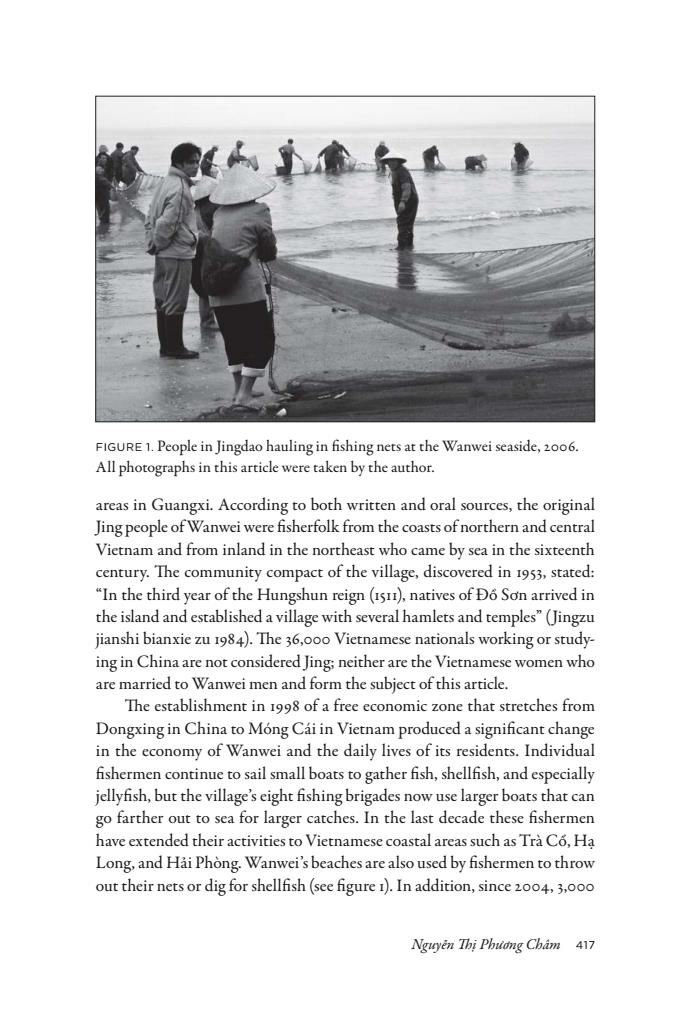正在加载图片...

FIGURE 1.People in Jingdao hauling in fishing nets at the Wanwei seaside,2006. All photographs in this article were taken by the author. areas in Guangxi.According to both written and oral sources,the original Jing people of Wanwei were fisherfolk from the coasts of northern and central Vietnam and from inland in the northeast who came by sea in the sixteenth century.The community compact of the village,discovered in 1953,stated: "In the third year of the Hungshun reign(isu),natives of D6 Son arrived in the island and established a village with several hamlets and temples"(Jingzu jianshi bianxie zu 1984).The 36,oo0 Vietnamese nationals working or study- ing in China are not considered Jing:neither are the Vietnamese women who are married to Wanwei men and form the subject of this article. The establishment in 1998 of a free economic zone that stretches from Dongxing in China to Mong Cai in Vietnam produced a significant change in the economy of Wanwei and the daily lives of its residents.Individual fishermen continue to sail small boats to gather fish,shellfish,and especially jellyfish,but the village's eight fishing brigades now use larger boats that can go farther out to sea for larger catches.In the last decade these fishermen have extended their activities to Vietnamese coastal areas such as Tra Co,Ha Long,and Hai Phong.Wanwei's beaches are also used by fishermen to throw out their nets or dig for shellfish (see figure r).In addition,since 2004.3.000 Nguyen Thi Phudng Cham 417Nguyễn Thị Phương Châm ùõü areas in Guangxi. According to both written and oral sources, the original Jing people of Wanwei were fisherfolk from the coasts of northern and central Vietnam and from inland in the northeast who came by sea in the sixteenth century. The community compact of the village, discovered in 1953, stated: “In the third year of the Hungshun reign (1511), natives of Đồ Sơn arrived in the island and established a village with several hamlets and temples” (Jingzu jianshi bianxie zu 1984). The 36,000 Vietnamese nationals working or studying in China are not considered Jing; neither are the Vietnamese women who are married to Wanwei men and form the subject of this article. The establishment in 1998 of a free economic zone that stretches from Dongxing in China to Móng Cái in Vietnam produced a significant change in the economy of Wanwei and the daily lives of its residents. Individual fishermen continue to sail small boats to gather fish, shellfish, and especially jellyfish, but the village’s eight fishing brigades now use larger boats that can go farther out to sea for larger catches. In the last decade these fishermen have extended their activities to Vietnamese coastal areas such as Trà Cổ, Hạ Long, and Hải Phòng. Wanwei’s beaches are also used by fishermen to throw out their nets or dig for shellfish (see figure 1). In addition, since 2004, 3,000 ŗõÿ People in Jingdao hauling in fishing nets at the Wanwei seaside, 2006. All photographs in this article were taken by the author